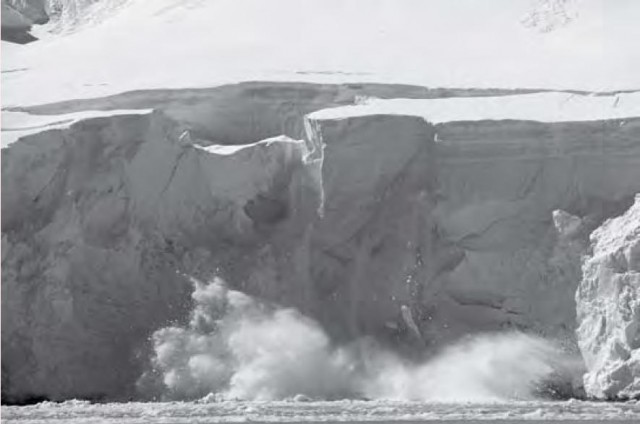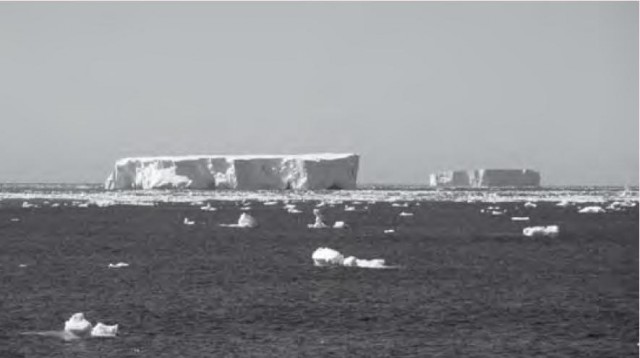Icebergs ahoy!
The thing that everyone knows about icebergs is that about 90 percent of the things are below water. Unusually for such a widely held belief, this one is completely true.
Archimedes lived in Sicily and it is safe to say he never saw an iceberg, but he could have told you why. His Principle tells you that anything placed in water is pushed upwards by a force equal to the weight of the water it has displaced. Ice is about 10 percent less dense than water. So when 90 percent of it is under water, the force of the water pushing upwards matches the weight of the ice pushing down, and it floats with about 10 percent of its mass above the surface. However, a fresh iceberg often has a less dense snow layer on top so that more than 10 percent of the volume is visible.
The icebergs that float in the world's oceans start out in the Arctic and Antarctic. They have two main sources. Some break off from the seaward end of a glacier, while others are formed when part of an ice sheet breaks loose. Either way, an iceberg is always “calved” rather than just forming. Not surprisingly, iceberg formation is at its height in spring and summer as the ice that formed over winter breaks loose. The Titanic was sunk in April 1912, at the height of the season for icebergs heading into the Atlantic from the Canadian and Greenland Arctic.

Because of the sheer scale of the Antarctic, and the fact that it is a frozen continent completely surrounded by ocean, it produces most of the biggest icebergs that enter the world's oceans. Fortunately, the Southern Ocean is so empty that they are not too big a hazard to shipping. Icebergs here tend to be kilometres rather than hundreds of metres in size.
According to the US government's National Ice Agency, the ice sheets of Greenland and Canada produce between 10,000 and 40,000 bergs per year, of which about 375 make their way into the North Atlantic shipping lanes. Most come from West Greenland, with smaller numbers from East Greenland and the Canadian Arctic. They take their time, typically three years, to get from calving to sailing the open Atlantic.
The smallest icebergs are called growlers – less than 20 square metres – and bergy bits, which are broken off bits of glacier ice a few hundred square metres in size. Even these will wreck your yacht if you hit one. Bigger ones include 'tabular” icebergs, the colossal aircraft-carrier-shaped ones. A floe is a large floating piece of ice that is more or less flat.

Icebergs are so huge below the water that their scrape-marks can be seen on rocks and the ocean floor. Louis Agassiz's sighting of such marks merits a mention by Herman Melville in Moby Dick. Their immense bulk means that icebergs are a hazard to ships and even more to fixed structures such as oil rigs. Sometimes ships are used to tow away especially threatening bergs that approach an oil platform. Nowadays, land-based and satellite radar can be used to track icebergs, much reducing their threat.
So far, nobody has tried the oft-discussed idea of towing Antarctic or Atlantic icebergs to water-deprived areas of the world such as the Middle East or California. Calculations suggest that with a fast enough ship, it might be possible to get them there before they melt. Much debated in the 1970s, this idea now seems to have been abandoned.